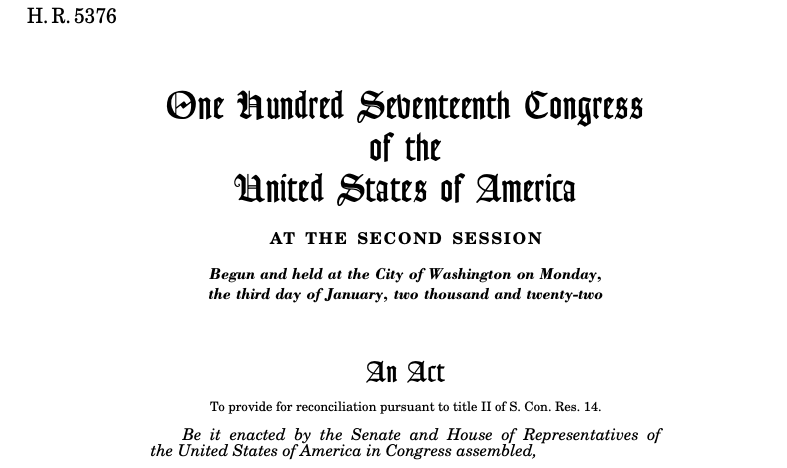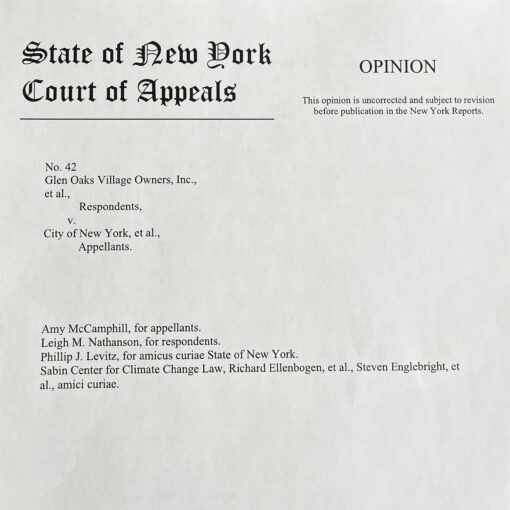By Amy Turner
The election dust has mostly settled, and with its drawn out conclusion has come much speculation about potential climate policy in a new Biden administration, particularly in light of President-elect Joseph Biden and Vice President-elect Kamala Harris designating climate change as one of their four policy priorities. While much of the climate and environmental regulatory analysis looks at federal law and policy, the Biden administration is poised to advance city climate action as well. 
Cities will continue to play an important role in developing GHG-reducing strategies across the buildings, transportation, waste and energy sectors, as well as in developing people-centered policy that prioritizes the needs of frontline communities. Federal action on climate change and a climate-focused plan to build back the U.S.’s Covid-rattled economy are most welcome, but they’ll act as complements and not replacements for the leadership cities demonstrate in the greenhouse gas reduction space. Carrying out the new administration’s climate policy will require careful attention to areas of authority that are traditionally delegated to cities and to the strengths cities have shown during the last decade or so of city-climate action. This blog post explores four ways the Biden administration could help cities advance their efforts to mitigate global greenhouse gas emissions, and in so doing identifies ways the administration should leverage cities’ expertise and take care to respect cities’ legal authority.
-
The Biden administration can set greenhouse gas emissions and energy standards that act as floors, but that allow states and cities to set more ambitious standards if they choose.
The Biden campaign’s Plan to Build a Modern, Sustainable Infrastructure and an Equitable Clean Energy Future (part of its Build Back Better plan) offers several concrete examples of standards and investments that the administration might pursue in order to address climate change that would significantly reduce city GHG emissions. These include retrofitting four million buildings, weatherizing two million homes, building zero-emissions public transit, expanding vehicle charging infrastructure, greening the electricity grid, electrifying appliances, creating millions of jobs to carry out these proposals and more.
Policies for building energy and land use authority are areas that are largely left to state and local governments by the Tenth Amendment. They comprise part of states’ and cities’ inherent police powers – that is, the general authority of states and local governments to regulate to protect health, safety and general welfare (states vary in what aspects of their police powers they delegate to municipalities, but all states have expressly or impliedly delegated significant, if differing, aspects of these authorities to their municipalities). A city’s climate action vis-à-vis buildings or local land use is not merely an expression of municipal authority in a legal or academic sense; it plays an important role in developing climate policies that can be adopted by other local governments around the country. To borrow the words of Justice Brandeis, “a single courageous State [or city] may, if its citizens choose, serve as a laboratory; and try novel social and economic experiments without risk to the rest of the country.” This “laboratories of democracy” framework has catalyzed climate action in the U.S. by allowing cities to experiment with novel, climate-friendly policies. “Natural gas bans” (or all-electric construction requirements) proliferated across the cities and towns of California after Berkeley first enacted one. A partnership agreement between Minneapolis and its local electric utilityto increase energy efficiency and renewable energy served as a model for agreements in Salt Lake City and Boulder. More recently, cities have responded to the Covid-19 pandemic by expanding bicycling and pedestrian access to street space, drawing inspiration and initial learnings from one another along the way.
Biden’s work to reduce greenhouse gas emissions, including in cities, should not come at the expense of this important innovation role cities play in moving climate policy forward. To that end, the Build Back Better plan can help augment city climate action, but should not overstep the traditional bounds of local authority that allow cities the ability to enact more ambitious climate policies. Two Build Back Better proposals deserve specific mention here. First, the plan proposes a “nationwide building performance standard.” Building performance standard policy has been developed by the careful work of path-blazing cities like Washington, D.C., St. Louis, New York and Boulder. Setting aside the current lack of federal legal authority for this, the Biden administration’s work in developing building policy should aim to set floors, not ceilings, for building performance requirements. A Biden administration could play a convening, funding and information-sharing role, developing model building performance standards that could be adopted by cities nationwide. It could offer incentives to cities that adopt ambitious building policies and it could advocate for a stronger International Energy Conservation Code, the code adopted by most U.S. states. But it should not hem cities in; in other words, federal building policy should aim to increase ambition but not preempt the building policies that have developed in the city “laboratories of [climate] democracy” and that now provide a roadmap for expanded action around the country.
Second, the Build Back Better plan proposes a public transit network for every city with a population of more than 100,000. This is a worthy goal, and the federal government can play a large role in supporting local public transit (see funding, item 3, below). New public transit systems will require land use decisions, which are traditionally and solidly in the local government domain. The Biden administration can offer significant support to these emerging public transit networks by offering resources, funding, know-how and best practices, as well as play a regional coordination role, ensuring that, say, local transit networks in Kansas City, Missouri and Kansas City, Kansas, meaningfully connect. It should, however, take care not to overstep the traditional authority of cities to set land use policy and make land use determinations.
-
The Biden administration can take the lead on policy levers that are largely the subject of federal authority.
While cities and other forms of local government have many policy tools available to them in reducing their greenhouse gas emissions, they are also stymied by lackluster federal policy and by federal law preemption. Cities will not be able to achieve their climate objectives without federal policy to address greenhouse gas emissions from sources over which local governments do not have direct authority. One example of outdated federal law and policy is in the area of low emission vehicles. Local governments’ authority to control vehicle GHG emissions is extremely limited. Federal law preempts state and local laws that set vehicle fuel economy or air emissions standards – not only can cities not require that all vehicles be electric or otherwise have low emissions, they cannot even require that a small category of vehicles, such as taxicabs, use low emissions technology. The transportation sector is the number one or two greenhouse gas emitter in essentially every city in the U.S. Though local governments pursue reductions in these emissions, including by expanding bus rapid transit, deploying bike and scooter share systems and piloting zero emissions school buses and package delivery services, cars and trucks remain on the road. Federal vehicle electrification policy could fix the regulatory gap left by federal preemption of local law.
City climate and clean energy goals are similarly dependent on federal action when it comes to achieving a 100% renewable energy supply. Many cities are taking steps on their own to procure and scale up renewable energy – from signing onto power purchase agreements to zoning for solar energy to developing community solar or community choice aggregation programs. This work is extremely important, both for reducing greenhouse gas emissions and fossil fuel reliance at the local level and for developing innovative new local government options for renewable energy. Eventually, however, cities are going to run up against the limits of how much renewable energy can be supplied within them absent additional support. Cities’ greenhouse gas emissions necessarily hinge on the greenness of the grid. Fortunately, then-candidate Biden set a goal for 100% carbon-free electricity by 2035, a needed show of federal leadership in developing a 21st century, clean energy infrastructure. We can continue to expect leading cities to seek out large-scale procurements of renewable energy, but cities’ net zero targets will require a grid fully powered by carbon-free sources, which only the federal government can spearhead in a coherent, nationwide way.
-
The Biden administration can provide funding for local climate action.
Biden’s Build Back Better plan contemplates a $2 trillion direct investment in response to climate change. While such an amount can only be provided by Congress (an outcome that is far from guaranteed), the incoming administration’s proposal to offer funding for building upgrades, expanded public transit, vehicle charging infrastructure and green power is encouraging to cities that have long been thwarted by the Trump administration’s antagonism to cities and climate policy alike.
Many aspects of city low-carbon policy and infrastructure require federal funding. Public transit, in particular, relies on federal funding in the best of times, and the drop in fare revenue resulting from the pandemic has only exacerbated this. In response to the coronavirus pandemic, large systems like New York City’s MTA have requested billions in assistance – funds that, for the most part, have not arrived. The federal government’s financial support is critical to maintaining robust transit networks that are, in turn, needed to reduce city greenhouse gas emissions from the transportation sector. With the fate of the Senate as yet undetermined, it is not clear how much funding the Biden administration will be able to procure for local transit, but the scale of Biden’s ambition sets the stage for more extensive federal support.
Additional federal funding can also spur the creation of many skilled jobs to upgrade a city’s buildings, maintain electric vehicle fleets and oversee other elements of a green economy. Biden has taken pains to avoid casting his climate plans as a “Green New Deal,” but he regularly ties climate action to job creation. This framing is particularly apt in the city context, where local climate action has the potential to lead to green jobs that cannot be outsourced. Indeed, many city climate policies, particularly in the building sector, have been touted for their potential to create jobs. While a mix of sources will surely fund job training programs and infrastructure improvements that will be needed to combat climate change, federal funding will amplify and hasten local efforts.
-
The Biden administration can set guardrails for protecting the interests of the most vulnerable.
Biden’s Build Back Better plan sits alongside his team’s Plan to Secure Environmental Justice and Equitable Economic Opportunity, which promises to update U.S. environmental justice policy and to use a data-centered approach to identifying and assisting environmental justice and frontline communities. The needs, perspectives and expertise of frontline community members are essential to developing sound local climate policy. Not only have these communities borne the brunt of climate impacts, they also have developed the expertise to work as policymakers, advocates and technical experts who understand how inequitable or ill-considered investment in local climate responses can lead to continued and elevated exposure to vehicle and power plant emissions, a deteriorating low-and moderate-income housing stock, gentrification and displacement, and more.
The Biden administration’s focus on environmental and climate justice is an opportunity for the federal government to play a role in setting guardrails for protecting the interests of the most vulnerable, setting a baseline set of criteria for how to solicit, consider and integrate the needs of community members and to make sure that members of frontline communities are both represented among the policymakers developing a city’s climate policy and benefit from city climate spending and programs. In particular, Biden’s environmental justice plan commits to “target 40% of the overall benefits from [Build Back Better’s proposed$2 trillion in climate-related investments] to disadvantaged communities,” including through investments in energy efficiency, transit, up-to-date housing and workforce training. The “overall benefits” language comes from New York State’s Climate Leadership and Community Protection Act, and its exact meaning has yet to play out in practice. As the new administration’s climate and environmental justice plans are put into effect, they can best support city climate policy by ensuring that the “overall benefits” aren’t watered down to the extent that much of the funds are spent outside of disadvantaged communities with only marginal benefits to those within.
At the same time the Biden administration should recognize that it cannot play the community-oriented, ground-up organizing role that is so critical to developing city climate policy. The federal government can offer support, resources and some ground rules for protecting and lifting up frontline communities, but it should not seek to supplant the important work being done by climate activists alongside their local leaders.
The incoming Biden administration’s serious commitment to climate action has the potential to greatly accelerate city progress in meeting their GHG reduction and clean energy commitments. In carrying out the Build Back Better plan, the incoming administration should seek to fill gaps in cities’ regulatory authority while respecting and supporting cities’ duly delegated authority and their expertise on local climate policy. Cities innovate in the climate space – they find new ways to reduce emissions from every sector of city life. Federal climate policy should seek to support and amplify their work, not displace it.




